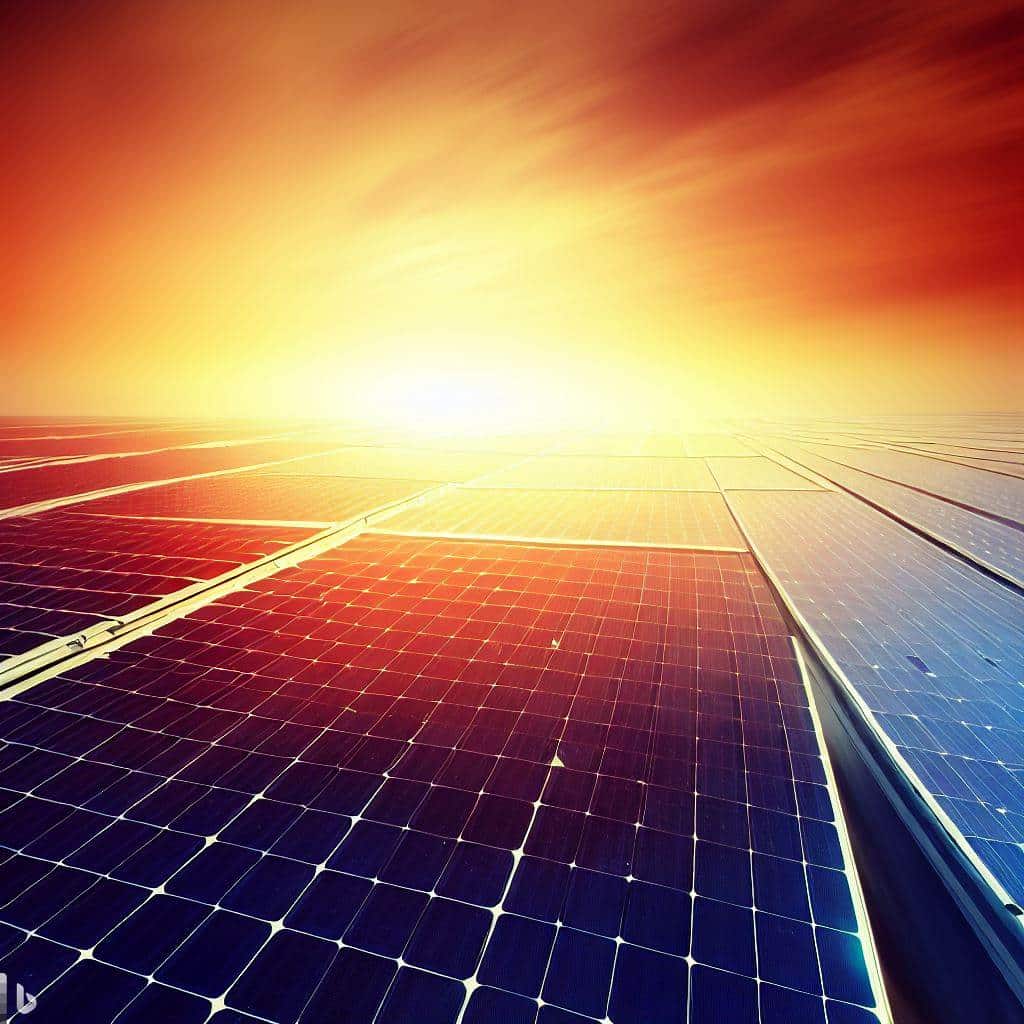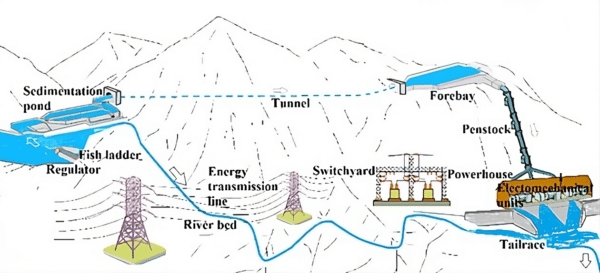- Solar Panels (Photovoltaic Modules): Solar panels consist of photovoltaic cells that directly convert sunlight into electrical energy. These panels generate energy by converting sunlight into electricity.
- Mounting Structure (Racking System): A metal structure used to place the panels and provide them with the optimal angle towards the sun. Ground-mounted and rooftop-mounted options are available.
- Inverters: Inverters convert the direct current (DC) produced by solar panels into alternating current (AC) used in homes. Inverters are crucial for enhancing system efficiency and energy quality.
- Transformer: Used in large-scale solar power plants to adjust and transmit the voltage level of the generated electricity.
- Distribution Panel and Electrical Components: Includes panels, breakers, fuses, etc., used to distribute, measure, and control the generated electricity.
- Data Monitoring and Control Systems: Software and hardware systems used to monitor the performance, collect data, and manage the solar power plant remotely.
- Underground Cables and Connectors: Cables and connectors used to transmit power from panels to inverters and other components.
- Infrastructure and Foundation Materials: Basic structure, concrete, anchors, screws, etc., necessary for installing solar panels.
- Solar Tracking Systems (Optional): Some plants may use tracking systems that follow the movement of the sun for panels. This can increase efficiency but also add to costs.
- Security Equipment and Environmental Protection: Measures such as security cameras, fences, fire suppression systems for ensuring the security of the solar power plant. Additionally, environmental protection measures need to be taken.
- Operation and Maintenance Equipment: Tools, equipment, and personnel necessary for regular maintenance of the plant.
Solar Panels
Monocrystalline Panels
- Monocrystalline panels are among the most efficient solar panels due to their single crystal structure.
- They offer high energy efficiency and produce more energy in limited spaces.
- They can be more expensive due to their high-cost manufacturing processes.
- Ideal for rooftop applications, homes, businesses, and industrial facilities.
Polycrystalline Panels
- Polycrystalline panels have multiple crystal structures and slightly lower efficiency compared to monocrystalline panels.
- Their manufacturing processes are more economical, making them generally more affordable.
- Commonly used in large open areas and large-scale solar power plants.
Thin-Film Panels
- Thin-film panels are made from amorphous (non-crystalline) silicon or other thin-film materials.
- They can be more flexible and lightweight, allowing them to be applied to various surfaces.
- Economical due to low-cost manufacturing processes.
- Often used in large industrial applications or portable power solutions.
Concentrated Solar Panels
- Concentrated panels use mirror or lens systems to collect and focus sunlight.
- They offer high efficiency but may require complex optical systems.
- Typically used in commercial and industrial-scale solar power plants.
Bifacial Panels
- Bifacial panels can collect sunlight from both their front and rear surfaces.
- They can enhance efficiency by utilizing reflected light.
- Often used on high-reflectivity surfaces or with special mounting structures.
Compare
Comparing different types of solar panels and determining the “best” one depends on various factors such as the use case, budget, local conditions, and more. Each panel type has its own advantages and disadvantages, and identifying the best type depends on your specific needs and requirements.
In general, monocrystalline panels tend to offer higher efficiency and can produce more energy in limited space, but they might be higher in cost. Polycrystalline panels are more budget-friendly and designed for use on larger areas. Thin-film panels, due to their flexibility and lightweight nature, can be applied to various surfaces but typically have lower efficiency. Concentrated solar panels provide high efficiency but require complex optical systems and are used on a commercial scale. Bifacial panels can enhance efficiency by utilizing reflected light but come with specific mounting requirements.
To determine the best panel type for you, consider the following factors:
- Efficiency: Do you prioritize high efficiency?
- Cost: What is your budget?
- Installation Area: Will you use it in a limited space or a larger area?
- Application Area: Where will the panels be used—residential, commercial, industrial, portable applications?
- Environmental Conditions: What’s your region’s climate and sunlight duration?
- Aesthetics and Design: Does the panel’s appearance and mounting style matter to you?
- Customization Needs: Do you require special mounting or flexible panels?
- Long-Term Returns: How does the potential long-term energy production and savings look
Considering these factors will help you make a well-informed decision about the most suitable panel type for your needs.
Inverters
Inverters are essential components in solar power systems, responsible for converting the direct current (DC) produced by solar panels into alternating current (AC), which is the type of electricity used in most homes and businesses. Inverters play a crucial role in optimizing the performance, safety, and reliability of solar energy systems. There are several types of inverters:
String Inverters
These are commonly used in residential and small commercial installations. They are connected to multiple solar panels in a “string” configuration and convert the combined DC power into AC power.
Microinverters
These are small inverters attached to each individual solar panel. Microinverters optimize the output of each panel independently, which can lead to improved system performance, especially in shaded or unevenly lit areas.
Central Inverters
Typically used in large-scale solar installations, central inverters handle the conversion for the entire array of panels. They are efficient but might suffer from reduced output if any part of the array is shaded.
Power Optimizers
These devices are connected to each panel and adjust the DC power output before it reaches the inverter. This helps maximize system performance, especially when dealing with shading issues.
Inverters also often come with monitoring and control features, allowing users to monitor the system’s performance, diagnose issues, and optimize energy production.
Transformers
Transformers are devices used to change the voltage level of electricity. In the context of solar power systems, transformers are sometimes used in larger utility-scale solar installations to adjust the voltage of the generated electricity to match the requirements of the grid. There are two main types of transformers used in solar power systems:
Step-Up Transformers
These increase the voltage of the electricity generated by the solar panels before it is fed into the grid. Higher voltage is needed for efficient long-distance transmission through power lines.
Step-Down Transformers
These lower the voltage of electricity from the grid before it’s used by homes and businesses. They also maintain the voltage at safe levels for distribution within neighborhoods.
Transformers help ensure that the electricity generated by the solar panels is compatible with the grid’s voltage and can be efficiently transmitted and distributed to consumers.
Both inverters and transformers are vital components in the overall functionality and efficiency of solar power systems, helping to convert and manage the electricity generated by solar panels for practical use.




